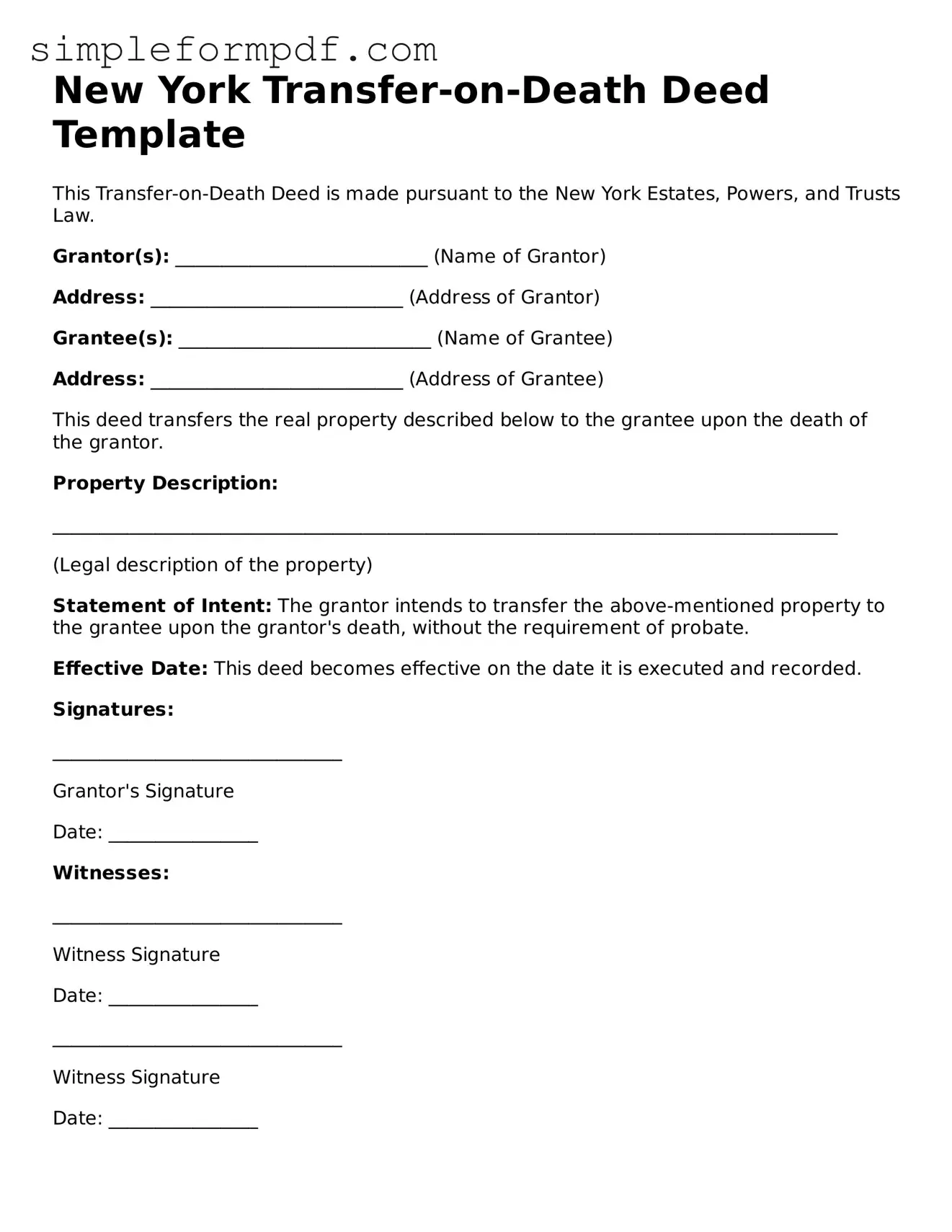New York Transfer-on-Death Deed Template
This Transfer-on-Death Deed is made pursuant to the New York Estates, Powers, and Trusts Law.
Grantor(s): ___________________________ (Name of Grantor)
Address: ___________________________ (Address of Grantor)
Grantee(s): ___________________________ (Name of Grantee)
Address: ___________________________ (Address of Grantee)
This deed transfers the real property described below to the grantee upon the death of the grantor.
Property Description:
____________________________________________________________________________________
(Legal description of the property)
Statement of Intent: The grantor intends to transfer the above-mentioned property to the grantee upon the grantor's death, without the requirement of probate.
Effective Date: This deed becomes effective on the date it is executed and recorded.
Signatures:
_______________________________
Grantor's Signature
Date: ________________
Witnesses:
_______________________________
Witness Signature
Date: ________________
_______________________________
Witness Signature
Date: ________________
This deed must be recorded in the county where the property is located to be effective. Ensure that all information is complete and accurate before recording.
